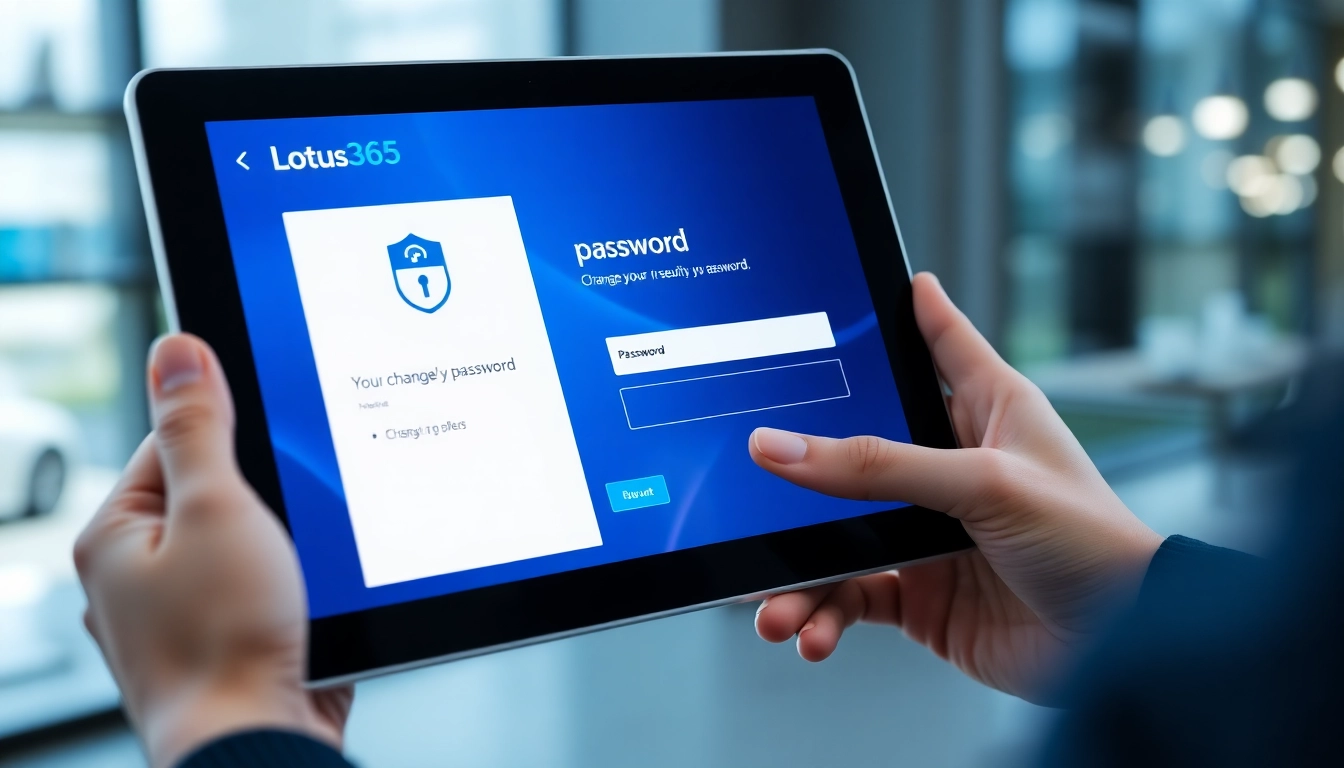Understanding the Importance of Updating Your Password on Lotus365 Blue
In today’s digital landscape, securing your online accounts is more critical than ever. For users of Lotus365 Blue, a platform renowned for its seamless betting and gaming experiences, maintaining robust security measures protects your personal information, transaction history, and account integrity. Regularly updating your password is a fundamental step in this process, preventing unauthorized access and safeguarding your digital assets. This comprehensive guide delves into the significance of changing your password and user ID, equipped with practical insights on how to do it effectively, and best practices to keep your account secure.
Why Regular Password Changes Enhance Account Security
Regular modifications of your account password significantly reduce the risk of hacking, unauthorized access, and potential financial loss. Cybersecurity experts consistently emphasize the importance of not only using strong, unique passwords but also changing them periodically. On platforms like Lotus365 Blue, where sensitive data and rapid financial transactions are involved, a compromised account can lead to serious repercussions, including identity theft or financial fraud.
Data from cybersecurity research indicates that over 60% of data breaches involve compromised credentials. Users who neglect to update passwords regularly become vulnerable to brute force attacks, phishing attempts, and malicious software that seek to exploit known or weak passwords. Changing your password every 60 to 90 days limits the window of opportunity for cybercriminals to misuse your account.
Moreover, if you suspect that your login credentials have been leaked or obtained through a security breach elsewhere, immediate password update is crucial. This proactive step prevents unauthorized parties from continuing to access your account unnoticed. Regular updates are akin to changing the locks on your digital door, ensuring only you have the keys.
How User ID Management Impacts Your Experience
Beyond passwords, your User ID plays a vital role in your overall experience and security on Lotus365 Blue. The User ID often acts as your primary identifier in the system, linked to your personal information, transaction history, and account preferences. Managing your User ID effectively helps you maintain a personalized experience and enhances account control.
When it comes to changing or updating your User ID, it’s essential to do so cautiously. A clear and memorable User ID simplifies login processes and reduces the chances of errors. However, it should not be easily guessable or linked to publicly available information, as this can compromise your account security.
Systematically managing your User ID and ensuring it remains unique helps in account recovery processes and prevents identity confusion, particularly if multiple accounts are involved. For users interested in customizing their profiles, some platforms allow limited modification of User IDs or display names, which should be done with security in mind — avoiding common phrases or easily guessed patterns.
In summary, proper User ID management enhances your platform interaction, simplifies security measures, and supports better account recovery procedures.
Risks of Using Weak or Repeated Passwords
Utilizing weak or reused passwords poses severe security threats. Common passwords such as “123456,” “password,” or “qwerty” remain prevalent among users despite being predictable and easily guessable by malicious actors. Reusing the same password across multiple platforms further amplifies this vulnerability; a breach on one site can compromise your overall digital security.
On Lotus365 Blue, weak passwords increase susceptibility to brute-force attacks, where cybercriminals automate attempts to guess your credentials. Once they gain access, they can drain accounts, manipulate betting activities, or steal personal information. Additionally, frequent data leaks and breaches make the use of repetitive passwords risky—if one platform’s data is compromised, your other accounts are potentially at risk.
Experts suggest creating complex passwords that combine uppercase and lowercase letters, numbers, and symbols, ideally of at least 12 characters. Using a password manager can help generate and store these complex passwords securely, removing the burden of memorization. Changing passwords periodically, especially after a security breach, minimizes the risk of long-term exploitation.
Remember, security is an ongoing process, and complacency with weak or reused passwords can lead to irreversible consequences.
Preparing to Change Your Password and User ID
Verifying Your Current Login Credentials
Before initiating a password or User ID change, verify that you have access to your current login details. Ensure you can successfully log into your account; this confirms that your existing credentials are correct and that your account is active. If you cannot log in, follow account recovery processes immediately, as this may indicate a security issue needing resolution before any updates.
Accessing the Secure Account Settings
Navigate to your profile or account management area through the official Lotus365 Blue interface. Typically, this involves logging in, then locating the “Settings,” “Profile,” or “Account” options. Always ensure you’re on the authentic platform—checking for secure connection symbols (HTTPS) and legitimate URL addresses—to avoid phishing scams.
Gathering Necessary Recovery Information
Be prepared with recovery data such as registered email addresses, phone numbers, or security questions associated with your account. Having these details ready simplifies the process if you need to verify your identity or troubleshoot any issues during the update process.
Step-by-Step Process to Change Password on Lotus365 Blue
Navigating to the Password Reset Section
After logging in securely, access the ‘Security Settings’ or ‘Password Management’ area within your profile menu. This section is often labeled as “Change Password,” “Reset Password,” or similar. Confirm you are in the official platform to prevent security breaches.
Submitting a New Password and Confirming Changes
Input your current password for verification, then enter your desired new password twice for confirmation. Ensure your new password adheres to recommended complexity standards. Some platforms provide guidelines or strength meters to assist in creating secure passwords. Once submitted, receive a confirmation message indicating successful password change.
Verifying Successful Password Update
Log out and attempt to log in again using your new password. Confirm that your credentials work and that your account remains fully accessible. If issues arise, use account recovery options or contact support for assistance. Regular verification helps ensure your security measures are active and effective.
How to Change or Update Your User ID
Accessing Your Profile Settings
Similar to changing passwords, navigate to your account settings within Lotus365 Blue. Look for “Profile” or “Account Info” sections where your User ID is displayed. Confirm your access rights, as some platforms may restrict User ID modifications to enhance security.
Selecting the Option to Edit User ID
If the platform permits, locate the ‘Edit’ or ‘Change’ option next to your current User ID. Follow prompts to initiate the update process. Be aware that some systems may require additional verification or restrictions on how often you can change your ID.
Entering and Saving a New User ID
Enter a new, unique, and memorable User ID that aligns with platform guidelines—avoiding special characters if restricted, and ensuring it doesn’t contain personally identifiable information that could compromise security. Save changes, and verify the update in your profile.
Best Practices for Maintaining Account Security
Using Strong, Unique Passwords
Always craft passwords that combine uppercase and lowercase letters, numbers, and symbols. Avoid common words or sequences, and aim for at least 12 characters in length. Using a reputable password manager like LastPass or Dashlane can facilitate generating and securely storing complex passwords, reducing the risk of reuse and forgetfulness.
Enabling Two-Factor Authentication
Two-factor authentication (2FA) adds an extra layer of security by requiring a secondary verification step—such as a one-time code sent to your mobile device—alongside your password. Enabling 2FA on Lotus365 Blue can drastically reduce unauthorized access risks, even if your password is compromised.
Regularly Monitoring Account Activity
Frequently review your account activity for any suspicious or unfamiliar transactions. Many platforms offer activity logs or recent login history. Promptly report unauthorized access or irregularities to support. Regular monitoring combined with timely updates creates a resilient security posture.



